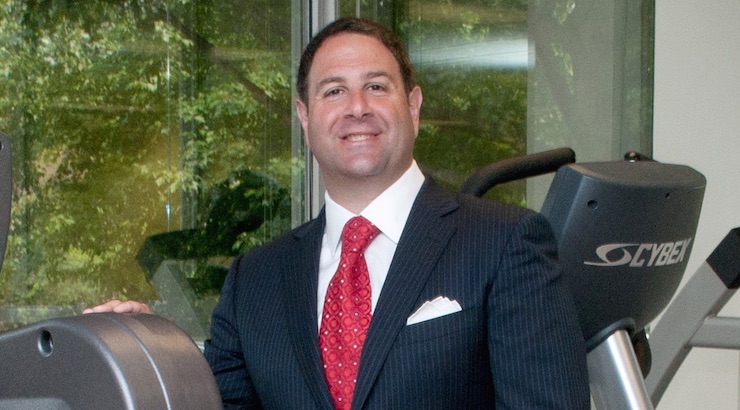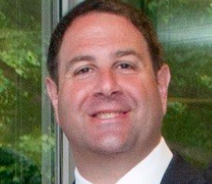JOHN GALLUCCI, JR. – Finding The Right Work-To-Rest Ratio
SoccerToday announced John Gallucci, Jr., MLS Medical Coordinator is the popular soccer news site’s newest columnist and will be writing a regular column on Injury Prevention and Treatment.
Youth Soccer News: A dynamic expert in injury prevention, rehabilitation, sports medicine and athletic conditioning, Gallucci is the Medical Coordinator for Major League Soccer (MLS), overseeing the medical care of 600 professional soccer players. Gallucci is the former Head Trainer of the New York Red Bulls MLS team and is a Sports Medicine consultant for professional athletes in the NHL, NFL, NBA, MLB, and USA Wrestling. Gallucci, Jr. is also President, JAG Physical Therapy & JAG Pediatric Therapy.
Diane Scavuzzo: Elite players often have no idea where to draw the line to prevent overuse injuries – any guidelines or suggestions?
John Gallucci, Jr: It’s very important that elite players understand that overuse injuries are injuries that are preventable.
Elite athletes need to understand how to take care of their bodies.
It is up to the coaches and the parents to basically guide them appropriately to make sure they are not doing too much, too often. The athlete needs to be trained appropriately and have a balanced work to rest ratio component, which you can see more about from my webinar on the National Soccer Coaches Association website. Basically, these are components that are very important for athletes to learn, especially elite level athletes.
Diane Scavuzzo: Does icing after working out/soccer practice make sense?
 John Gallucci, Jr: The only time you should be icing is when there is a true injury – such as with Osgood Schlatter – and usually it is prescribed by a medical professional such as a certified athletic trainer or a physical therapist.
John Gallucci, Jr: The only time you should be icing is when there is a true injury – such as with Osgood Schlatter – and usually it is prescribed by a medical professional such as a certified athletic trainer or a physical therapist.
Diane Scavuzzo: How do you know how to select a good physical therapist? Tips on making the right choice?
John Gallucci, Jr: I just wrote an article for the Star Ledger in reference to educating people on physical therapy here in New Jersey. The biggest component is to make sure that your physical therapist understands – especially with athletes – not just the parameters on decreasing pain and getting the joint to work normally, but also understanding the concept of progression of exercise and functional exercises on the sport that you are involved with.
For example, does the physical therapist understand the demands of soccer?
You also need to make sure that no athlete is returned back to the field until they pass a true functional skills soccer test.
It is also important to know that an athlete just doesn’t come straight from an athletic trainer or physical therapist to the field, the coaches need to be working hand in hand with the physical therapist and the athletic trainer to make sure there is good progression back to “full-go.” If you do pass the functional test in the physical therapy office and you do return to the field, you should understand that it will be anywhere from a 10 -14 day full progression before you are playing in full 90-minute game.
Just as you work out in pre-season, you need to understand that you have to get yourself conditioned and ready to go for the game and making sure you are healthy enough to play.
Diane Scavuzzo: A lot of youth male players seem to be impacted by Osgood Schlatters disease – What is the best way to minimize/treat?
John Gallucci, Jr: The best way to look at it is that it’s not about prevention, but decreasing symptoms. As I described in earlier, it is very important that parents and athletes are taught how to decrease the symptoms, and the easiest way to decrease symptoms of Osgood Schlatter’s is to get on an ice protocol.
Usually, I recommend icing 2-3 times a day for 15 minutes right on the joint, but also making sure the athlete is on a good strengthening and flexibility program which will assist in the elasticity of the tendon which will reduce swelling and inflammation overall. This is a big recommendation. More and more physicians understand that Osgood Schlatter’s disease should really be treated by a physical therapist that understands the components and mechanisms of the injury.
Diane Scavuzzo: ACL Injury Risk – Top tips to prevent/avoid ACL and Top tips for a full recovery
John Gallucci, Jr: It is important to get all athletes into a true preventative program to decrease the incidence of injury.
I had said that we have the L.E.S.S. program – the lower extremity strengthening system. There is also the PEP program out of Santa Monica where a dear friend of mine, Dr. Bert Mandelbaum, and Dr. Holly Silvers, authored and researched. Those two programs are probably the best on decreasing the incidence of ACL injuries across our country.
It is very important to understand the biomechanics and the strengthening components. I believe more and more parents, especially of female athletes, need to do their research and get their children into one of these programs. You can have access to our L.E.S.S. program by picking up my book Soccer Injury Prevention and Treatment.






